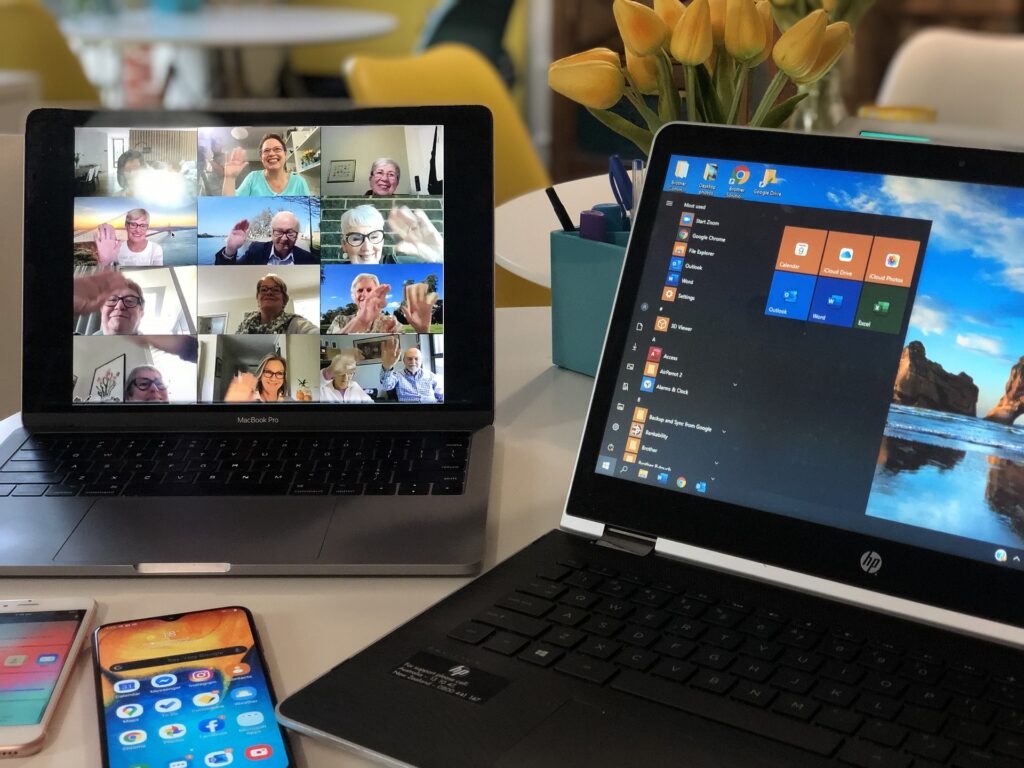While the shift to virtual events has created opportunities for businesses to connect with audiences worldwide, it has also created new challenges for event organizers. One of the most significant challenges is maximizing attendee engagement in virtual corporate events.
Attendee engagement is essential to the success of any virtual event, as it can impact attendees’ overall experience, satisfaction, and willingness to return in the future. However, creating opportunities for engagement in virtual events is easy if you focus on your audience.
Here, we’ll share tips and strategies for creating interactive and engaging virtual experiences that captivate your audience. From Q&As to breakouts to polls to one-on-one networking to gamification, we’ll cover everything you need to know to create a memorable event. We will also discuss how social media and networking can facilitate engagement and foster a sense of community.
Understanding Your Attendee Demographics
Data on attendee demographics can be gathered through various methods, such as surveys, analytics from previous events, and social media. It helps identify your audience’s preferences and tailor your marketing campaigns, content, and schedules to engage them better. Ultimately, this can lead to increased attendee satisfaction and higher engagement levels, resulting in a more successful virtual event.

One significant advantage of gathering demographic data is that it helps businesses create targeted marketing campaigns that are more effective in reaching specific audience groups, enabling businesses to tailor their content and marketing campaigns to meet their audience’s specific needs and preferences, which can increase the likelihood of them showing up (which is the first step to engagement). Providing more personalized content and recommendations that resonate with your audience attracts more potential viewers, and when they’re in, they know the content will be relevant to them. Data can also help organizers identify their audience’s preferred communication channels and the most active times of day, helping you optimize scheduling.
Gathering demographic data is the bread and butter of creating products and services that resonate with the target audience. Without understanding your audience’s preferences and interests, businesses risk presenting content and services that miss the mark entirely. Gathering demographic data can provide insights into how to build products that hit the bullseye and result in higher attendee satisfaction and engagement in future events.
Utilizing Attendee Demographic Data To Create An Engaging Event
One way to use demographic data to create an engaging event is by gathering insights on what worked and what didn’t for specific demographics in previous events. By doing so, organizers can identify trends and patterns in attendee behavior and preferences and make necessary adjustments to successfully accommodate and create an engaging event for the specific demographic.

If previous events showed that a certain age group preferred shorter sessions with more interactive elements, organizers could adapt the event schedule and content to reflect that preference. If analytics suggest your target demographic engages more with particular content, utilize that insight to create something close to that content for your audience (but you know this already).
Analyzing demographic data can also help event organizers create targeted marketing campaigns that appeal to specific groups. Organizers can create personalized messages and promote the event in the proper channels at the right time, maximizing the chances of reaching and engaging the target audience.
Interactive Elements And Technologies
Incorporating interactive features such as gamification, virtual breakout rooms, and real-time interactive polls can captivate attendees and provide a unique and immersive event experience. Virtual breakout rooms create an intimate space where attendees can connect and go deeper into the event’s topics. Gamification can stir up a thrilling and competitive atmosphere that prompts attendees to engage actively with the content presented and one another. Interactive polls allow immediate feedback and adjust the event’s content or format.

These interactive elements and technologies significantly impact attendee engagement, providing an immersive experience that enhances learning, networking, and overall enjoyment. Attendees are more likely to remember and retain information from the event when actively engaged in the content, likely increasing future attendance, word-of-mouth, and further engagement opportunities with your clients.
Encouraging Networking Opportunities
While lacking in-person interaction, you still have live interaction. Offering opportunities for attendees to connect and network provides a sense of community and motivation to remain engaged.
These sessions can take on a variety of formats, including informal chats or more structured speed networking events. Encouraging attendee interaction through polls, Q&A sessions, and chat functions can also increase engagement. Attendees feel more actively involved in the event through these methods, allowing them to share their ideas and discuss content with others. Downtime for breaks and opt-in programmed or unprogrammed networking sessions are essential to re-energize your audience.
Providing opportunities for attendee-led sessions is also an effective way to increase engagement. These sessions can be led by attendees who want to share their experiences and knowledge on a particular topic. By doing so, attendees feel more involved in the event and are more likely to remain engaged, enhancing the overall experience. These are best in the networking rooms and left off the main stage unless you’re planning this session with the client or fan ahead of time.
Building a Strong Community
Building a community demands a strategy, clear-cut communication, and captivating activities to create a feeling of belonging and fellowship among attendees.
To succeed in building a community, you must consider factors like the scope of the community, the events’ motives, and how much the participants are involved. With the appropriate approach, and the use of tech tools to aid communication and interaction, virtual events can be a high-impact resource for creating and fortifying communities.
Here are some examples of Incorporating virtual events into your community-building plan or initiative to enhance community spirit.

- Virtual community fairs are designed to serve as a meeting point for attendees from diverse backgrounds and industries to network, share their experiences, and learn from one another in an innovative and immersive atmosphere.
- Virtual town hall meetings provide a conducive environment for attendees to voice their opinions, engage in meaningful discussions, and reflect on their values. They foster empathy, inclusivity, intellectual growth, and debate! The debate is OK. Just keep it civil. Or not…it’s your event.
- Virtual charity events promote communal responsibility and foster a sense of fulfillment and enrichment, allowing individuals to make a positive impact. They offer a platform for attendees to give back in various ways or to highlight an important but overlooked segment of society.
- Virtual book clubs create an environment that fosters critical thinking, empathy, and creativity. They provide a platform for attendees to explore each others’ interpretations of a book in the sharing of insights and perspectives.
- Virtual workshops and classes are the perfect places for participants to gain transformative insights, enhance existing skill sets, and amplify professional capabilities by learning from experts in their respective fields. They help attendees stay ahead in the ever-changing business world, exploring novel techniques to hone their craft.
- Watch parties provide attendees with an interactive and engaging experience by bringing them together to watch and discuss a shared experience, such as a movie or TV show. The following discussions and critiques help foster camaraderie in this shared experience.
- Virtual debates create an opportunity for attendees to discuss and share their perspectives on a particular topic in a structured and supportive environment (or unstructured and hostile! Don’t let us tell you how to do it). This encourages critical thinking and provides a platform for exchanging ideas and knowledge.
- Presentations or Q&A sessions offer attendees a unique opportunity to engage directly with speakers and thought leaders via breakout rooms, thereby gaining a deeper understanding of the speaker’s thought process and expertise. It offers an opportunity for attendees to learn directly from experts in their respective fields and to ask questions that may not be heard otherwise.
To successfully integrate virtual events into your community-building plan, you must identify your goals, create a content plan, provide networking opportunities, encourage participation, and leverage social media. Defining your goals and objectives for incorporating virtual events into your community-building plan will help you determine the type of events and activities most effectively achieve your goals. Once you have defined your goals, you can develop a content plan that aligns with them.
Integrate virtual events into your community-building plan by creating dedicated channels or groups where attendees can connect and engage with each other before, during, and after the event, creating a more engaging and impactful event experience. Consider a Discord channel.

Community building activity ahead of the event significantly impacts attendee engagement as it creates a sense of connection and belonging. When attendees feel like they are part of a community, they are more likely to engage with the event content, participate in event activities, and return for future events. You can continue to build community in your virtual event, and a virtual event can be your opening salvo on the community front (if it’s your launch event), but it’s best to start and keep on with the community-building efforts outside of your virtual events schedule.
Fostering Interaction, Collaboration, And Support Through Virtual Engagement
Virtual events allow attendees with similar interests and experiences to come together in one place. For example, a virtual industry conference can bring together professionals from the same field to share their experiences, learn from one another, and network.
Virtual events foster engagement and the exchange of ideas through interactive sessions, such as panel discussions or breakout sessions. Virtual engagement tools such as live chats, polls, and quizzes can also facilitate this exchange of ideas and promote active participation.
Collaborative activities can enhance engagement in virtual corporate events when attendees are split into smaller groups to work on projects, brainstorm ideas, or discuss topics related to the event. Collaborative activities can foster a sense of community and promote teamwork, increasing engagement.
Attendees may feel isolated during virtual events, especially if they are attending from a remote location. Offering support through virtual engagement can help to mitigate these feelings. A virtual workshop focused on mental health may help you create an open and comfortable environment where attendees can share their experiences and provide support to one another. A workshop focused on exercise gets people to move around and loosen up. A workshop that sets out to come up with solutions to pressing social issues gets people to switch on empathetically. You pick.
Measuring Success And Improving For Future Events
Compile feedback via analytics data, then add surveys, polls, or open-ended questions to the close of the event or in a follow-up email. Analyze the feedback to identify areas of strength and weakness and use it to guide future event planning.

Use metrics such as attendance, engagement, and feedback scores to measure the event’s success. The data and feedback collected should be used to identify areas for improvement in both content and structure, maximizing engagement strategies to uplevel the attendee experience.
Conclusion
It is essential for you to prioritize attendee engagement in your next virtual event as it will make or break success in the event’s objectives. By keeping attendees engaged throughout the event, organizers can guarantee that attendees remain interested, attentive, and involved, leading to increased participation and a more meaningful experience.
Providing opportunities for attendees to connect with the speakers through live Q&A sessions, virtual breakout rooms, one-on-one networking sessions, and designing interactive segments that incorporate elements like polls, quizzes, and games all add to the event’s impact on your attendees. Optimizing for engagement via virtual events can lead to growth in brand exposure, customer loyalty, and business success, building stronger relationships with your customers, prospects, or fans.
To stay ahead in the ever-evolving virtual event landscape, you must remain innovative and creative in your approach to maximizing attendee engagement. By staying updated with the latest technologies and trends and continuously seeking feedback from attendees, you can create virtual events that are truly memorable and meet your business goals. With these efforts, you’ll ensure that your virtual events are filled with attendees that remain engaged and informed throughout the event and feel rewarded for their attendance afterward.
Frequently Asked Questions
What are the benefits of gathering feedback post-event?
Benefits of gathering feedback post-event include:
Improving the attendee experience
Enhancing the effectiveness of future events
Identifying areas for improvement
Increasing attendee satisfaction and engagement
Feedback can be gathered through surveys, social media platforms, and other channels and should be analyzed and acted upon to ensure continuous improvement.
How can you encourage active participation in virtual corporate events?
Create a sense of involvement and connection throughout the event. To achieve this, you can use interactive elements like:
Polls
Quizzes
Q&A sessions
Breakout rooms
One-on-one speed networking
Live pitches
VIP rooms with the thought leaders
Gamification
If you think of more, let us know. Additionally, providing clear instructions and expectations for attendees, and ensuring that the event is well-organized and engaging, can encourage active participation.
What are some common mistakes to avoid when planning virtual corporate events?
Some common mistakes include not providing enough opportunities for attendees to participate, not using interactive features effectively, and not incorporating team-building activities or multimedia elements to enhance the overall experience. It’s also important to ensure that the technology and platform used for the event are user-friendly and accessible to all attendees.
How can I use attendee feedback to improve future virtual corporate events and maximize engagement in the long term?
Feedback helps you fix everything about your event, like content, format, design, and level of audience engagement. Reviewing attendance metrics, such as how long attendees stayed and which parts of the event they engaged with the most, can provide insights into what worked well and what could be improved. In addition to the platform analytics, surveys help.
Why is attendee engagement important in virtual corporate events, and how can it impact the success of the event?
It helps to create a sense of community and fosters a deeper connection between attendees and the company or brand. Engaged attendees are more likely to retain the information provided during the event, take action on the information, feel positive about their experience with the company or brand, and therefore are more likely to share their experience with others, which can result in increased brand awareness and potential new leads. Lack of engagement can result in fall-off, disinterested attendees, and potentially, a negative perception of your brand.






